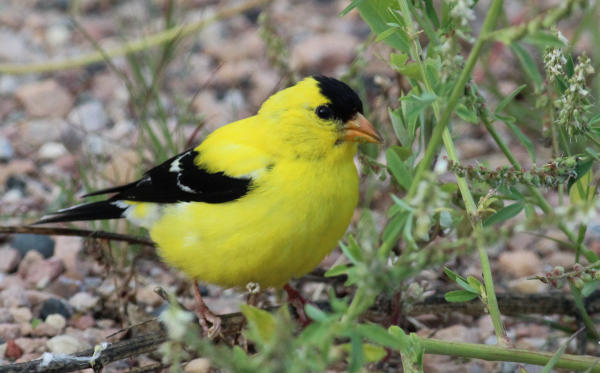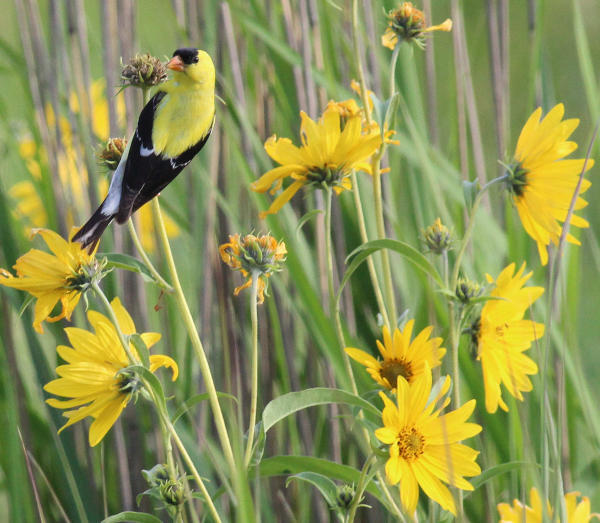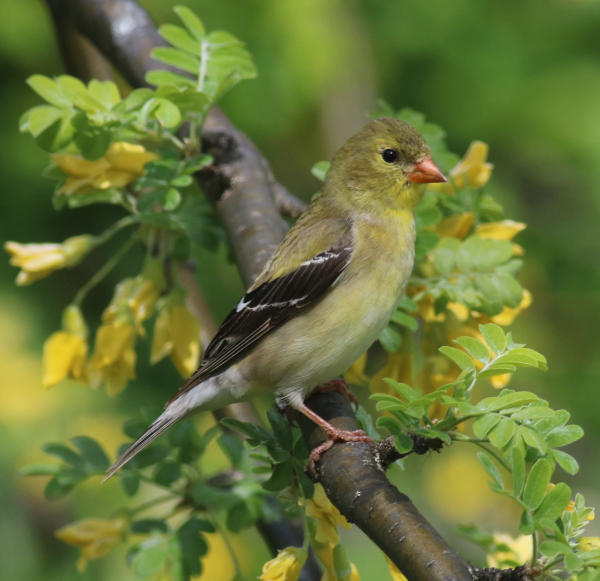
American Goldfinch male

An American Goldfinch male in basic (nonbreeding) plumage.

|
Among the most popular birds in the United States, American Goldfinches are one of the last birds to nest during summer with peak nesting during July, although western populations nest more frequently during June. Some nesting activities continue into August, especially if a second nesting attempt is initiated. Goldfinches have some of the smallest nests of any non-hummingbird species, and their eggs and nestlings are similarly among the smallest of American birds.
Certainly, American Goldfinches are among the most common visitors to thistle feeders and birdbaths. In some areas of the country, goldfinches are interesting visitors to winter feeders and water features, although they evacuate the colder northern latitudes of their range. Some winter flocks may number more than 100 and can dominate a winter feeding station.
Male and female American Goldfinches have different distinct breeding (alternate) and non-breeding (basic) plumages. The winter plumage of males is mostly tan with some yellow feathers in the face and neck, plus black wings and tail. Females’ non-breeding plumage is mostly tan in color with dark brown-blackish wings and tail. American Goldfinches belong to the finch family, Fringillidae, which includes other goldfinches found in the American Southwest – Lesser Goldfinches and Lawrence’s Goldfinches.
Range: Nest from southern Canada to a line from Oregon to northern Louisiana to Georgia. During winter they leave the northern latitudes and some other populations relocate during winter. Southern wintering limits include the northern states of Mexico and along the Gulf Coast to Veracruz.
Habitat: Open areas with scattered trees or shrubs, including native prairies, hayfields and urban areas.
Mating: Pairs are monogamous.
Nest: The female builds the small bowl-shaped nest of pliable pants lined with plant down and bound with spider-web silk; usually located in a fork of a small tree branch. Some goldfinches may nest twice per nesting season.
Clutch Size: 3 to 6 pale blue or blue-white eggs.
Incubation Period: Female incubates eggs 10 to 12 days; male feeds female while she incubates.
Nestling Period: Male and female feed nestlings regurgitated seeds, sometimes mixed with small insects.
Fledging: Nestlings fledge in 12 to 16 days.
Food: Primarily small seeds, like the seeds of thistles and similar plants. Adults regurgitate masticated seeds, sometimes mixed with portions of small insects.
Conservation: Common cowbird host, although because of the specialized seed diet of goldfinches, cowbird nestlings rarely survive in goldfinch nests.